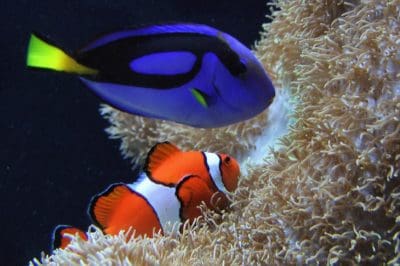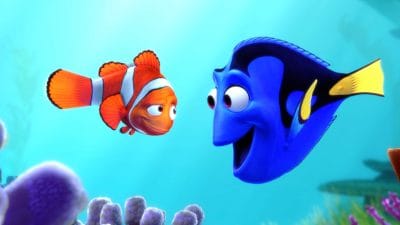
Similar to what occurred after the film Finding Nemo became a huge success, the new sequel, Finding Dory, is making clownfish and blue tang fish popular in aquariums at home.
Though many sympathized with Nemo after he was stolen from the ocean and forced to live life in a dentist’s aquarium tank, this is what happens everyday for real life fish caught in the wild. The fish are then obligated to adapt to life in a tank after first having no confines in the ocean.
What’s worse is the method used to catch these fish, which is actually much worse than the “compassionate” way Nemo was caught in the ocean.
Though it’s illegal, divers use cyanide poisoning to stun the targeted fish so they can more easily capture them. Studies show that 50% of all nearby fish and coral reefs exposed to the cyanide die immediately.
The practice is more common now that tropical fish, like the clownfish and blue tang, are in much higher demand. Craig Downs from the Haereticus Environment Laboratory in Virginia said that the popularity of clownfish alone after Finding Nemo was released, resulted in more than one million of them being caught from reefs.
The Center for Biological Diversity and For the Fishes conducted research into the tropical fish trade and found that 6 million tropical fish imported in the United States each year to be sold as pets were exposed to cyanide.

It’s important to note that not only is this dangerous and inhumane for the fish, but it’s also extremely lethal for marine life and ecosystems. A square meter of reef is killed for each fish that is captured, turning a once lively ecosystem into a barren marine desert.
When reefs disappear, so do fish populations, which affects those higher on the food chain that survive on these populations for sustenance.
Cyanide poisoning is illegal but isn’t highly-regulated, as foreign countries like the Philippines and Indonesia turn a large profit from selling to the U.S., who doesn’t reject the fish despite the illegal practice used to capture them.
Studies show that blue tang cannot be bred in captivity, meaning that all blue tang seen in aquariums were wild-caught.
While these cartoon films are adorable and make many consumers want to have their own Nemos and Dories at home, the films should be a lesson on why it’s best to leave these wild fish in their natural habitats in the ocean.
What are your thoughts on this inhumane practice? Please share, like, and comment on this article!
This article (Did ‘Finding Dory’ Encourage The Poisoning And Death of Real-Life “Dories” In The Ocean?) is free and open source. You have permission to republish this article under a Creative Commons license with attribution to the author and TrueActivist.com


